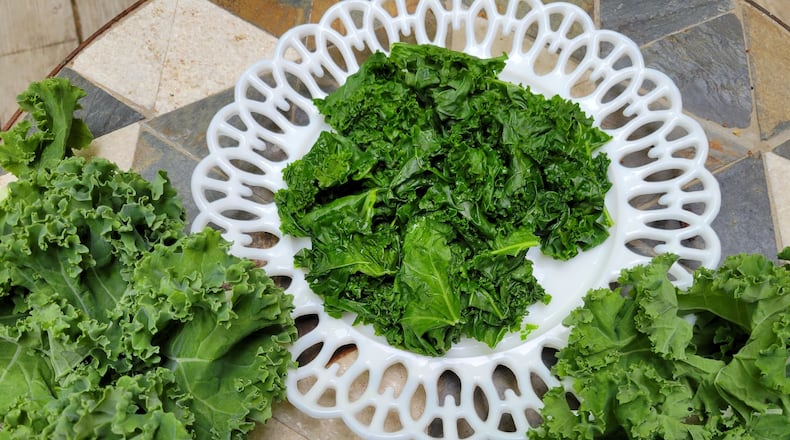Second, despite its status as a super-food — or perhaps because of it — kale is not very popular. The average American eats only 6 ounces of kale a year.
Even in France, kale is unpopular. The French language doesn’t have a name for it, other than “curly cabbage,” or “the American green” (not complimentary, given the French disdain for American food).
When preparing these columns, I often look into the food’s history. The narrative is typically repetitive. The vegetable grew wild thousands of years ago somewhere in Asia, where it was eventually cultivated, then carried westward into Europe, and ultimately brought by Europeans to America.
The story of kale’s arrival in America turns out to make a good story. It was brought here around 1900 by David Fairchild (1869–1954), long-time food spy for the U.S. Department of Agriculture.
Fairchild came from an academic family. His grandfather was one of the founders of Oberlin College, his two uncles were Presidents of Oberlin and Berea College, and his father was President of Michigan State and Kansas State.
Fairchild’s official title as food spy was Head of the USDA Office of Seed and Plant Introduction. Fairchild joined USDA at age 20 and traveled to every continent in search of exotic plants and foods.
Fairchild is credited with bringing back tens of thousands of exotic plants and foods that U.S. farmers could try to grow and U.S. consumers might be willing to eat. Examples include avocados, mangos, quinoa, and pistachios.
Some of Fairchild’s work involved official diplomacy. For example, his best-known negotiation was securing Japan’s gift to the U.S. of the cherry blossom trees that adorn Washington.
Some of his work was clandestine. For example, Germany’s hops growers closely guarded their fields to prevent others from stealing samples, but Fairchild managed to smuggle some back to the U.S. to help grow the beer industry.
So what about kale, the purported subject of this column? A book by Daniel Stone, “The Food Explorer: The True Adventures of the Globe-Trotting Botanist Who Transformed What America Eats,” explains.
Fairchild found a leafy plant called cappuzzo along the Austria-Hungary Empire (now Croatia) coast. Fairchild wrote “the people of Austria-Hungary ate it with enthusiasm, and not because it was good, but because it was there.”
Fairchild was taken with cappuzzo so he brought some back to America. It was cheap and easy to grow, he wrote, and with such dense and bulky leaves the biggest challenge of farming seemed to be to make it stop growing. We call it kale.
MOON Co-op Grocery is Oxford’s consumer-owned full-service grocery featuring natural, local, organic, sustainable, and Earth-friendly products. MOON Co-op, located at 512 S. Locust St. in Oxford, is open to the public every day. See it online at mooncoop.coop.
